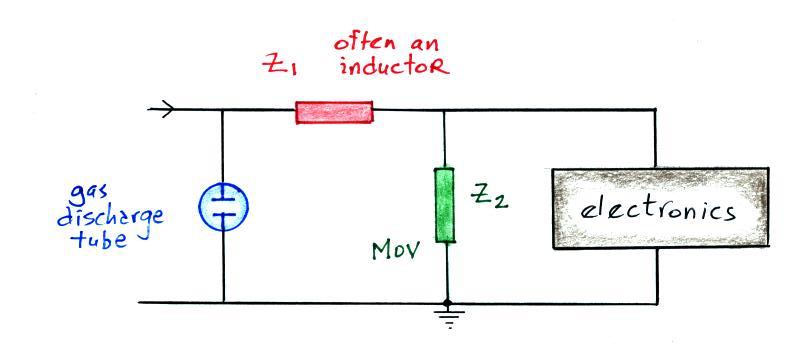How does a Surge Protective device work?
A surge protective device, also known as a surge suppressor or a surge protector, is a device designed to protect electrical equipment from the harmful effects of electrical spikes and surges. The two most common methods that surge protection devices use to serve this function are diverting any excess electrical surge to a ground and blocking the surge. Most residential surge protection devices make use of the grounding method, which diverts excess voltage to a power outlet's ground wire.
An electrical surge is classified based on the length of time it lasts. A spike lasts less than three nanoseconds, or three-billionths of a second. Any power flux that lasts longer than a spike is known as a power surge. Any electrical value higher than the standard voltage in an area — such as 240 volts in the India — qualifies as either a spike or a surge. Surge protection devices are designed to protect against the effects of both spikes and surges.
When a surge protective device is functioning properly,
standard voltage levels pass through unaffected, but a spike or surge
will be filtered to a ground through means of a Metal Oxide Varistor (variable resistor)
(MOV).(More on this in the next update :) ) An MOV acts like a magnet for the harmful excess electricity,
drawing it from the live wire and transferring it to the power outlet’s
ground wire, away from any delicate electronic equipment. An MOV has a
limited life span and might need to be replaced after withstanding a
certain number of surges. This usually is indicated by a light on the
surge protective device itself.
A surge protective device might also make use of a gas discharge tube (GDT) to protect against surges. A GDT uses an inert gas to divert the electrical current from the live wire to the ground wire. During normal voltage, the gas is inert and makes a very poor conductor for current. When a surge occurs, however, the excess voltage causes the gas to ionize, and it becomes an excellent conductor. The extra voltage moves through the gas and into the ground wire until the voltage returns to a safe level, when the gas returns to its inert form. Like an MOV, a GDT is capable of sustaining only a certain number of surges.
Though surge protective devices are an important appliance to protect delicate electronic components, they are far from infallible. A surge beyond the surge protector’s capacity to withstand can still damage any connected equipment. The best protection during a high-risk situation, such as a thunderstorm, is unplugging the electrical device altogether.
A surge protective device might also make use of a gas discharge tube (GDT) to protect against surges. A GDT uses an inert gas to divert the electrical current from the live wire to the ground wire. During normal voltage, the gas is inert and makes a very poor conductor for current. When a surge occurs, however, the excess voltage causes the gas to ionize, and it becomes an excellent conductor. The extra voltage moves through the gas and into the ground wire until the voltage returns to a safe level, when the gas returns to its inert form. Like an MOV, a GDT is capable of sustaining only a certain number of surges.
Though surge protective devices are an important appliance to protect delicate electronic components, they are far from infallible. A surge beyond the surge protector’s capacity to withstand can still damage any connected equipment. The best protection during a high-risk situation, such as a thunderstorm, is unplugging the electrical device altogether.


Comments
Post a Comment